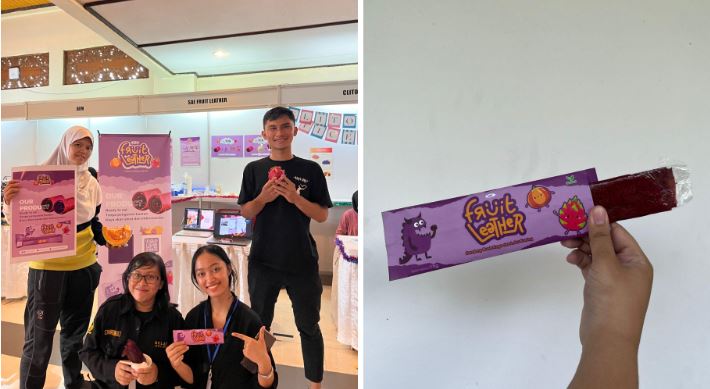
The Ministry of National Development Planning stated that between 2010 and 2023, 20% of food waste in Indonesia originated from fruits.
As a result, farmers in Indonesia often face losses because they are unable to sell their harvests, either due to surplus produce or the short shelf life of fruits.
Additionally, the 2021 report from Statistics Indonesia mentioned that the average fruit consumption in Indonesia is 81.14 grams per capita per day. This is only 54.09% of the World Health Organization’s (WHO) minimum nutrition adequacy figure.
Under the guidance of Dr. Didik Purwadi, the UGM Student Creativity Program (PKM) team, consisting of Muhammad Attar Gibran, Bernadeta Tresnanira, Trisha Nadira, Divara Hana Vania, and Azra Syifa, conducted an innovative food product project utilizing pumpkin and red dragon fruit.
Attar Gibran, in a statement to the press on Thursday (October 26), mentioned that the selection of pumpkin and dragon fruit was based on the abundance of these fruits, which offer various health benefits.
As known, dragon fruit contains various antioxidants, including vitamin C, beta-carotene, and polyphenols.
Antioxidants help protect the body’s cells from damage caused by free radicals. The high fiber content in dragon fruit helps control cholesterol levels, while the potassium in dragon fruit supports healthy blood pressure.
Additionally, pumpkin contains beta-carotene, a natural pigment that gives it its orange color. Beta-carotene can be converted into vitamin A, essential for eye health, skin, and the immune system.
According to Gibran, the product they created is SAE Fruit Leather, produced using a dehydrator to maintain the fruit’s nutritional content.
“This product is made without preservatives, making it safe for consumption,” he explained.
SAE Fruit Leather has a chewy texture like candy, comes in a wide shape (15 x 25 cm), and is packed in a roll to facilitate storage. The wide form was chosen so consumers could freely combine it with ice cream or yogurt or shape it according to their preferences.
The SAE Fruit Leather has passed food safety tests for Total Plate Count (TPC) bacteria and fungi, as well as nutritional content evaluations.
“This product is very suitable to be combined with various other foods, such as cakes, yogurt, ice cream, and others to enhance flavors,” Gibran added.
He hopes this product will help meet fiber and micronutrient intake for the younger generation and contribute to the creation of sustainable economics for dragon fruit and pumpkin farmers.
Author: Gusti Grehenson

